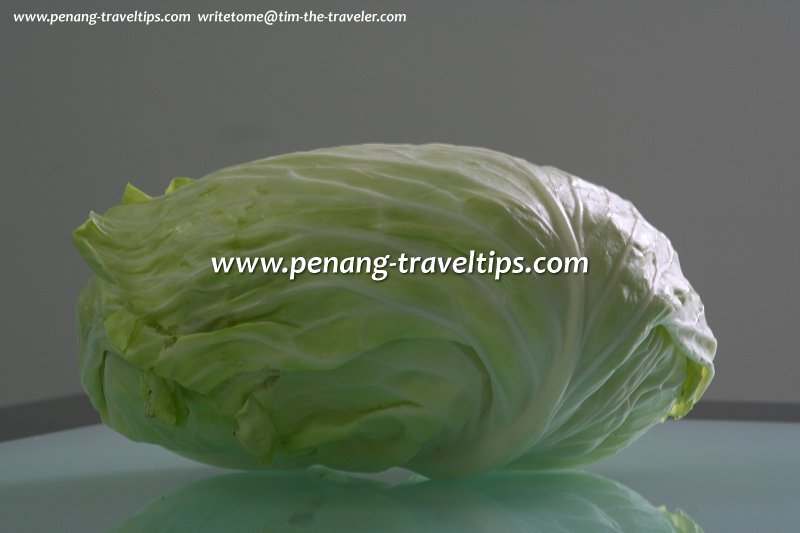 Cabbage (16 August 2008)
Cabbage (16 August 2008)
The cabbage (Brassica oleracea var. capitata), is a popular vegetable that appears often in Nyonya dishes. Known as Koleh Chye in Hokkien, this leafy garden plant comes from the Family Brassicaceae. It is used in Nyonya dishes such as Jiu Hoo Char (fried cuttlefish floss), Chap Chye (ten-vege Dish), Char Bee Hoon (fried rice-noodle), vegetable roll, among others. It is also used in a variety of soups including cabbage soup as well as hot pots / steamboats. The method of preparing cabbage depends on the dishes. In dishes such as jiu hoo char, the cabbage is sliced into thin strips. In chap chye, the cabbage is usually left if slices into pieces or squares.
Boiling releases sugars from the cabbage leaves, and this creates the characteristic cabbage aroma, which are pleasant to some people and offensive to others. (I personally love the smell of boiled cabbages). There is a belief that boiled cabbage causes flatulence in some people. Nevertheless, boiling does not hard to the properties of the cabbage, which is an excellent source of vitamins and dietary fiber.
Benefits of Cabbage
How much to eat
One serving of cabbage per week, whether raw or cooked, has been shown to lower the risk of colon cancer. However, 2-3 times a week is suggested for any significant effect.Good to know
Eating cabbages reduces our iodine absorption, so people who eat cabbages more than two or three times should eat more iodine-rich foods.
 Copyright © 2003-2025 Timothy Tye. All Rights Reserved.
Copyright © 2003-2025 Timothy Tye. All Rights Reserved.
Copyright © 2003-2025 Timothy Tye. All Rights Reserved.

 Go Back
Go Back